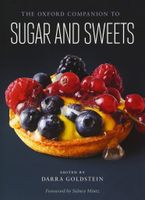Noble Rot
Published 2015
The second method for producing sweet wines is to allow noble rot—the fungus Botrytis cinerea—to accelerate desiccation of the grapes by perforating their skin. Simultaneously, an enzyme released by the fungus oxidizes many substances in the grapes. A wine utterly different in aroma results, one that is also richer in flavor and body to that made from similar grapes unaffected by noble rot. A little bit goes a long way, hence the common practice of marketing these wines in half bottles.
Become a Premium Member to access this page
Unlimited, ad-free access to hundreds of the world’s best cookbooks
Over 160,000 recipes with thousands more added every month
Recommended by leading chefs and food writers
Powerful search filters to match your tastes
Create collections and add reviews or private notes to any recipe
Swipe to browse each cookbook from cover-to-cover
Manage your subscription via the My Membership page
Part of
Advertisement
Related Recipes
-
-
-
-
Related Reference
-
-
-
-
Advertisement



